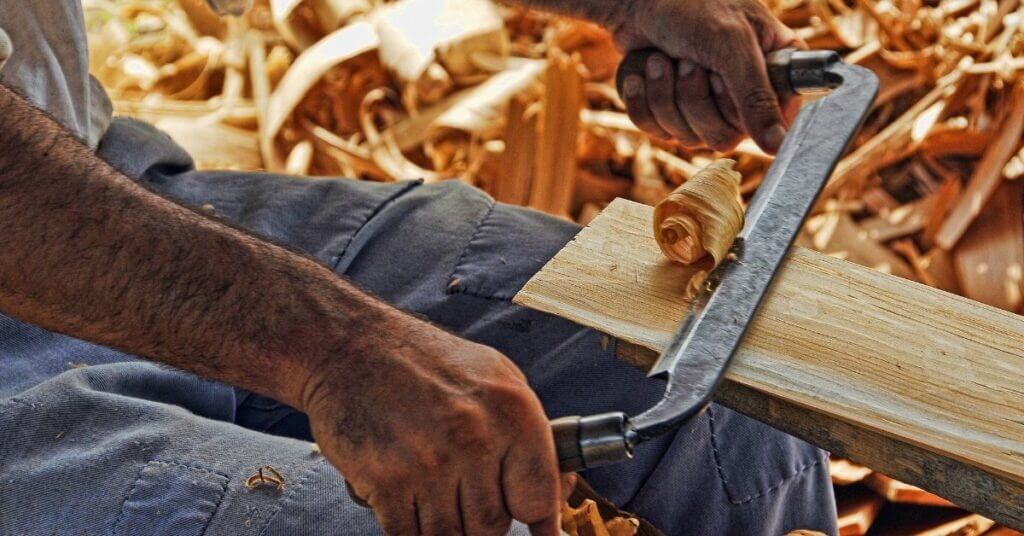Pine Wood is the most affordable and preferred softwood for many wood projects. It is known for its stiffness, durability, strength, and shock resistance properties. Pine is a versatile wood, which is used in almost all fields. Pine is a softwood but it is stronger than many other hardwoods.
There are more than 100 species of pine, but only a few of them are true pines. Pines fall into 3 broad categories: Red Pine, White Pine, and Yellow pine.
White Pine refers to
- Eastern white pine (Pinus strobus)
- Western white pine (Pinus monticola)
- Limber pine (Pinus flexilis)
- Chinese white pine (Pinus armandii)
- Japanese white pine (Pinus parviflora)
- Vietnamese white pine (Pinus dalatensis)
Yellow Pine refers to
- Longleaf pine (Pinus palustris)
- Shortleaf pine (Pinus echinata)
- Slash pine (Pinus elliottii)
- loblolly pine (Pinus taeda)
| # | Eastern white pine(White Pine) | Longleaf pine(Yellow Pine) |
| Scientific Name: | Pinus strobus | Pinus palustris |
| Color | light brown to a reddish hue | Reddish-brown |
| Height | 65-100 ft (20-30 m) tall, 2-4 ft (.6-1.2 m) trunk diameter | 100-115 ft (30-35 m) tall, 2-3 ft (.6-1 m) trunk diameter |
| Workability | Easy to work | Overall good |
| Finishing | Finish well | Finish well |
| Availability | Easily available | Easily available |
| Durability | Moderate to low | Moderate to low |
| Common Uses | Crates, boxes, interior millwork, construction lumber, carving, and boatbuilding. | stringers, roof trusses, poles, joists, piles |
White Pine vs Yellow Pine Uses
White Pine Uses
1. Crates and Boxes
White pine is widely used for making boxes and crates. Wood is light in weight and strong. It can handle heavy goods with ease and Being light, it can be easy to transport. It is easy to work with all types of tools.
2. Carving
Eastern White Pine and Western White Pine are the preferred wood for carving. Compared to other softwood, Pine is easy to carve with hand tools and electric carving tools. The Janka hardness of white pine is very less. Even beginners can do pine wood carving easily.
3. Plywood and Veneer
White pine is used in plywood and veneer sheets due to its attractive natural color and uniform grain pattern. The cost of plywood and veneers is less than that of solid wood.
Yellow Pine Uses
1. Deck Construction
Yellow pine is a great option for deck construction. Pressure-treated wood is more durable and moisture resistant than typical pine wood. But pressure treated wood costs more than ordinary pine wood.
2. Roof Trusses, Beams
Yellow pine wood is hard, dense, and possesses an excellent strength-to-weight ratio. Therefore yellow pine is widely used for roof trusses, beams, and pillars.
3. Construction of bridges
Compared to white pine, yellow pine performs better in moisture and outdoor weather. Yellow pine has medium to high load capacity and moderate moisture resistance, so it is suitable for bridge construction.
Common uses of White pine and Yellow pine
1. Flooring
Most of the owners believe that softwood is weaker than hardwood, which makes it not suitable for rigid projects like flooring. But it is not completely true. Many species of softwood have been used for many centuries for flooring.
The density of softwood is less than that of hardwood. Due to this, the possibility of getting dents and scratches is more than hardwood. But still, pressure-treated softwood is preferred for flooring.
All types of Pines are a great choice for flooring. Pine flooring can be durable for 100 years or more. All types of pine are low-density softwood, So we need some care and regular maintenance.
Generally, the density of yellow pine is higher than white pine. Another reason to use Pine Wood for flooring is its light color and uniform grain pattern.
2. Furniture
White pine and yellow pine are strong, shock-resistant, and durable softwood. They are easy to work with and a great option for making quality furniture. A-grade Pine has fewer knots, which are considered for quality furniture.
Pressure-treated pine is excellent for all types of furniture that have been chemically treated to resist rot, decay, and termites. Pressure-treated wood costs more than typical pine wood.
White Pine vs Yellow Pine: Wood color and Grain
White Pine
The heartwood of white pine is light brown, sometimes with a slightly reddish hue. Whereas sapwood is a pale yellow to nearly white. When white pine is exposed to air and sunlight, Color tends to darken with age.
White Pine is straight-grained and ring-porous with an even, medium texture. It also has some dark knots.
Yellow Pine
The heartwood of yellow pine is a soft yellow to a tan. While the sapwood is yellowish-white. Its natural color looks attractive.
Yellow Pine has a straight grain with an even and uniform texture.
White Pine vs Yellow Pine: Workability

Working with White Pine
White Pine is easy to work with both hand and machine tools and responds well. Glues and finishes well. Due to the straight grain and low density, there is no problem in cutting and sanding.
Working with Yellow Pine
Yellow Pine works fairly well with hand and machine tools, though the resin can gum up tools blade and clog sandpaper. But glues and finishes are good.
Yellow pines contain a lot of resin and water. Therefore, before working on wood, make sure that the wood is completely dry. The wood must be dry for good finishing.
How to Stain Pine?
Generally, Pine Wood accepts stains well. But due to having open pores, the stain accepts unevenly and develops a blotchy condition. So it’s important to use a pre-stain conditioner.
The pre-stain conditioner creates a layer on the wood surface. So the stain accepts the entire wood surface evenly and uniformly.
Rot Resistance
The heartwood of the white pine and yellow pine are rated as medium to low in decay resistance. Sapwood does not have resistance to decay. Therefore, Pine Wood is not a very good option for outdoor use.
Pressure-treated pine wood is a better choice for outdoor or damp area use. Pressure-treated woods perform much better than ordinary wood, better able to resist dents, scratches, and wear.
Allergies/Toxicity
All types of Pine have been reported to cause allergic common skin reactions. It can also cause problems for asthma patients.
Therefore, while working on pine, be careful, cover the exposed skin well and use glasses.


